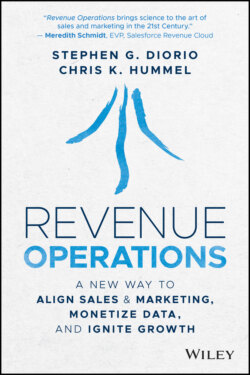Читать книгу Revenue Operations - Stephen Diorio, Chris K. Hummel - Страница 10
Marketing: Increasing Ambiguity
ОглавлениеTelling the company story, getting the offer in market, and orchestrating the customer experience. These are valuable activities that all contribute to demand generation and firm value. In a digital world where innovation, trust, and customer experience matter more, the perceived value of marketing activities has increased, yet budgets are shrinking, and the scope of the function is fluctuating.
A relatively recent invention of the twentieth century, the Chief Marketing Officer (CMO) role has changed dramatically over the course of its short span of existence by shifting from managing media and building brands and demand in the last century to curating the customer experience in digital channels and managing customer analytics in the modern era.
At its best, Marketing should be a commercial function that delivers significant, tangible impact on the business performance of a company, affecting both revenue and valuation. Whether you're the CMO, a brand manager, or a creative specialist, the role can be exhilarating, frustrating, intellectual, administrative, strategic, creative, scientific, powerless, and game-changing – usually all of these and often simultaneously. Transformation is happening, and many fronts are moving. Ambiguity is a marketer's constant companion. Why?
The skill sets in marketing are in flux. Technology, data overload, market noise, and fluctuating channels combine with massive variation in budgets, metrics, decision rights, organizational structure and incentives to present existential challenges.
The marketing toolset has democratized. Other departments and functions can now execute “marketing” activities on their own, blurring areas of collaboration.
The marketing mix has changed. Digital marketing technology infrastructure and the people data analytics and content required to support them now command the bulk of marketing budgets. Also, the budget allocated on “owned marketing” – where the company controls the message 100% – now exceeds paid media.
Marketing doesn't fully control the digital channels needed to do their job. Most customer engagement now happens in digital and contactless channels, but in most cases marketing does not own or manage the systems, data assets, and blueprint for these increasingly important systems.
We all lost control of the buyer's journey. While the idea of a linear demand funnel is archaic, marketers can still influence the buyer's journey having an engagement model for wherever the customer wants to go.
Organizational “flashpoints” are increasing in breadth and depth. The tussle over marketing's intersections with product, digital, sales, and service teams challenges management structures.
Every marketing organization has a customized, unique structure. Collaboration with peers can suffer when the size, scope, activities, and mandate of every marketing organization fluctuate constantly. Culture evolves organizations that are as unique as a fingerprint.
Marketing leaders need to recognize that these ambiguities weigh on marketing personnel and their peers across the company. At its most impactful, marketing orchestrates – engaging with all other parts of the company, providing holistic views of the customer perspective, and amplifying the best of the organization to create a whole that is greater than the sum of the individual parts. Otherwise, like a decaying satellite, the marketing function will continue to appear quite sophisticated and even cool from the outside as it inexorably heads toward its own demise.
